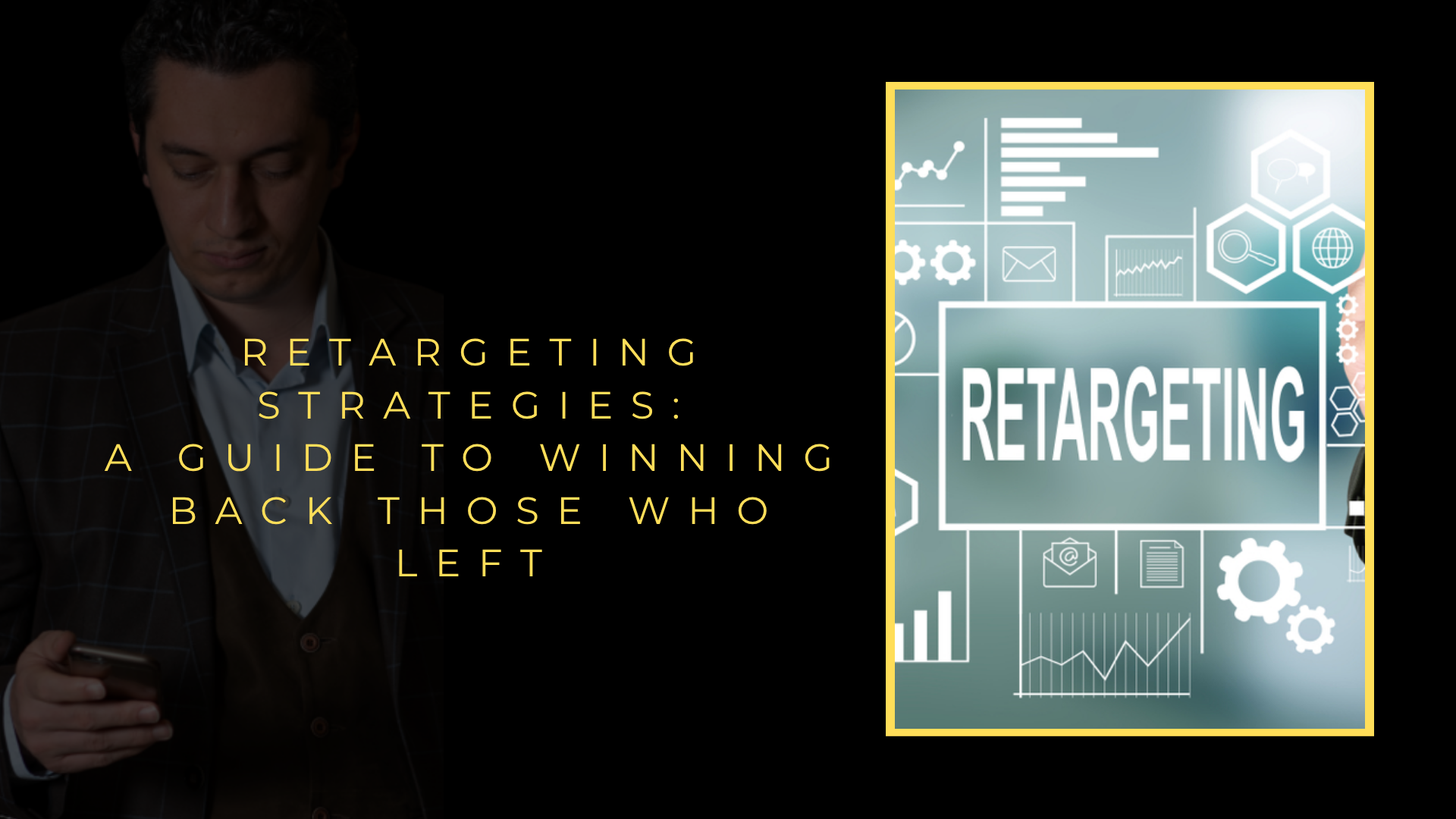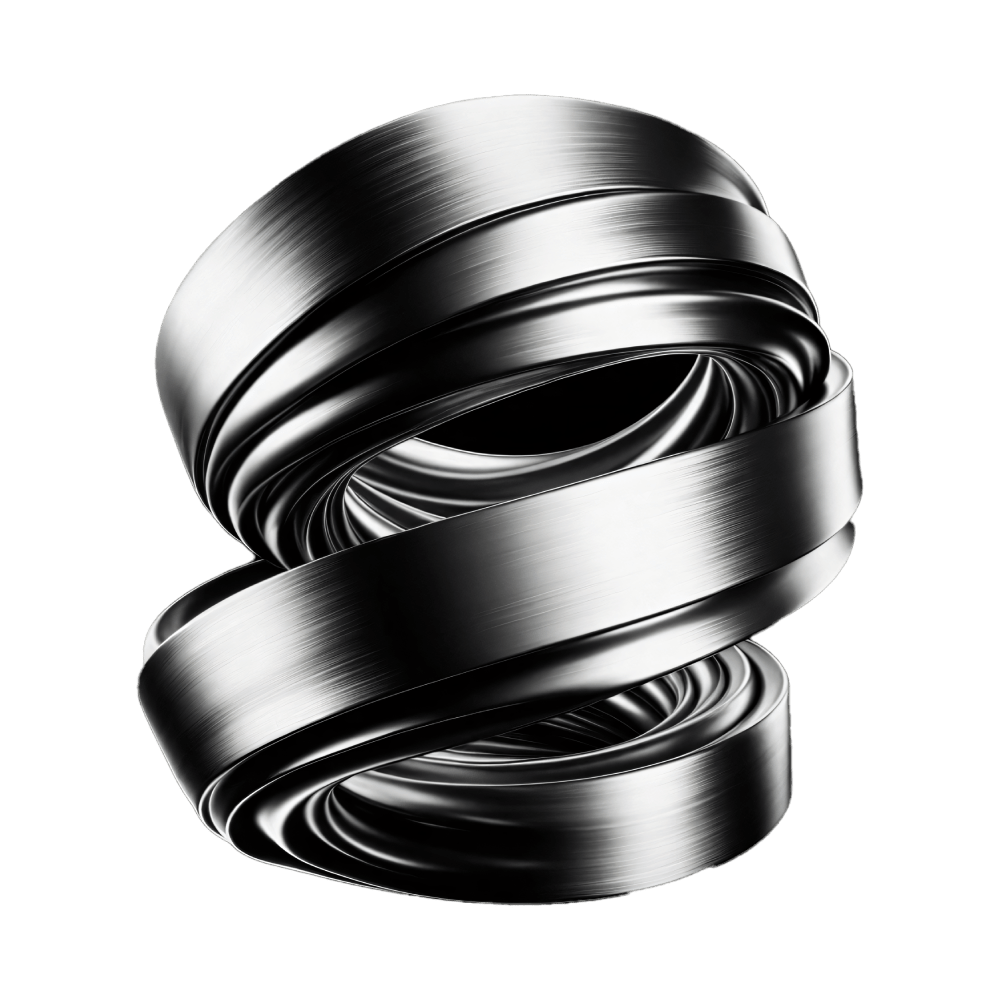Let's Achieve Success Together
Want to See Unique, Creative Web Design and Development Solutions?
Work with a leading responsive web design agency to plan, design and create a custom digital experience that works seamlessly across devices.


The Retargeting Playbook: A 5-Step Framework to Re-engage Cart Abandoners and Boost Conversions provides a systematic methodology for optimizing post-abandonment customer journeys, transforming a significant revenue leakage point into a predictable conversion channel. For industrial enterprises, where high-value capital equipment or bulk material orders constitute the average transaction, a single recovered cart can have a substantial impact on the bottom line.
This framework is built upon a foundation of rigorous data segmentation, moving beyond generic messaging. The playbook instructs on categorizing abandoners based on critical variables such as product value, stage in the procurement funnel, and user behavior, enabling hyper-personalized retargeting campaigns. This level of granularity is essential for addressing the specific concerns of engineers and procurement committees.
A core technical component involves dynamic creative optimization (DCO), which automatically generates ad content featuring the exact abandoned items. This automation ensures message relevance at scale, a critical factor when dealing with complex industrial catalogs. The system integrates with existing marketing automation platforms to trigger a sequenced communication flow across multiple channels.
The playbook's strategic application of multi-touch attribution provides commercial decision-makers with a clear view of which touchpoints genuinely influence conversion, allowing for precise budget allocation. This moves the retargeting strategy from a simple reminder system to a sophisticated lead nurturing engine that builds confidence and addresses latent objections.
For product managers overseeing digital catalogs, the framework offers invaluable insights into friction points within the procurement process. Analysis of abandonment data can reveal technical documentation gaps, complex configuration issues, or pricing structure confusion, directly informing product and UX improvements.
Serdar Gürsoy emphasizes the importance of conversion rate optimization (CRO) principles throughout the five-step process, ensuring that the retargeting effort does not merely drive traffic back but actively facilitates the completion of the transaction. This involves testing landing page elements, form fields, and call-to-action language specific to a B2B audience.
The playbook functions as a closed-loop system, where data from retargeting campaigns feeds back into the initial data segmentation model, creating a continuously improving cycle. This systematic approach, grounded in measurable outcomes, provides a reliable framework for maximizing customer lifetime value and improving marketing return on investment.
The decision between dynamic retargeting and static retargeting is a critical one for B2B marketers aiming to maximize return on investment throughout the complex sales funnel. Static retargeting serves a general advertisement, such as a brand logo or a promotional message, to all users who have visited your site. While this approach reinforces brand awareness, its lack of personalization often leads to ad fatigue and lower engagement rates among sophisticated industrial buyers who expect relevance.
Dynamic retargeting, by contrast, leverages a sophisticated data feed to automatically populate ads with the specific products, components, or white papers a prospect viewed. For a product manager evaluating industrial sensors, an ad would dynamically display the exact model numbers and technical specifications they researched, directly addressing their purchase intent. This hyper-relevance is powered by a robust customer data platform that tracks user behavior across site visits.
The application of dynamic retargeting significantly enhances lead nurturing by delivering a personalized journey. A commercial decision-maker who downloaded a case study on wastewater treatment solutions might subsequently see ads featuring that specific application, along with a link to a related ROI calculator. This sequential messaging guides high-value prospects through the funnel more effectively than a static brand ad, increasing the probability of a qualified conversion rate.
Implementing a successful dynamic strategy requires meticulous audience segmentation. Segments should be defined by behavior, such as visitors to high-intent pages like pricing or technical documentation, allowing for tailored creative and messaging. This granular approach ensures marketing spend is allocated to audiences with the highest propensity to convert, optimizing campaign performance.
While dynamic retargeting typically delivers a superior ROI for middle and bottom-funnel activities, static campaigns retain value for top-funnel brand awareness objectives. The most effective strategy, as noted by digital marketing expert Serdar Gürsoy, often involves a hybrid model. This approach uses static ads for broad audience building and dynamically personalized creatives to re-engage users who have demonstrated specific interest, creating a cohesive and efficient marketing machine.
The conventional focus of retargeting campaigns on abandoned shopping carts represents a significant missed opportunity in the B2B and industrial sectors, where the sales cycle is longer and the consideration phase is more complex.
Beyond the Cart: Advanced Retargeting Strategies for Abandoned Lead Forms and View-Content Users addresses this gap by implementing a sophisticated multi-touch attribution model that values early and mid-funnel engagements.
This approach specifically targets users who initiated but did not submit a contact or whitepaper request form, a critical conversion funnel leak for companies marketing high-value capital equipment or environmental consulting services.
The system employs dynamic ad creative that can showcase the specific product data sheet or service page the user viewed, thereby reinforcing the initial value proposition and addressing potential objections preemptively.
For industrial engineers evaluating technical specifications, this personalization is crucial, as it demonstrates a deep understanding of their specific inquiry and project requirements.
A key technical feature is the platform's ability to segment audiences based on the depth of content interaction, allowing for a segmentation strategy that distinguishes between a casual browser and a highly engaged prospect who consumed multiple technical documents.
This granular data enables more effective lead scoring, ensuring that sales teams receive prioritized alerts for the warmest prospects who have been retargeted with success.
The methodology significantly improves marketing automation workflows by triggering tailored email sequences or LinkedIn ad campaigns that provide additional case studies or technical support information.
In practical application, this strategy recovers a substantial percentage of high-intent leads that would otherwise be lost, directly impacting the return on advertising spend for complex sales processes.
By moving beyond simple cart recovery, Serdar Gürsoy's framework provides a measurable advantage in competitive industrial and environmental markets where educating the buyer is paramount to closing the deal.

In industrial and high-value B2B sectors, the purchase journey is rarely linear, making the recapture of abandoned engagements a critical revenue driver. The foundational step in this process is the systematic data segmentation of abandoners, which moves beyond simple list collection to a dynamic classification based on user behavior and intent.
Effective segmentation begins by identifying key abandonment triggers, such as leaving a product configuration tool without saving or abandoning a shopping cart containing high-value spare parts. This initial data segmentation allows for the creation of distinct audience clusters. For instance, a user who abandoned after viewing technical specifications requires a different communication approach than one who abandoned after a price negotiation.
The core of hyper-personalization lies in leveraging behavioral analytics to understand the 'why' behind the abandonment. Integrating tools that track scroll depth, time spent on key pages, and repeated visits to specific product features provides a rich dataset. This behavioral analytics layer transforms raw abandonment data into actionable intelligence, enabling messaging that directly addresses the prospect's specific hesitation.
To achieve true one-to-one engagement, marketers must implement a personalization engine. This technology dynamically populates retargeting ads or email content with the exact products, configurations, or even negotiated prices that the user previously engaged with. This level of personalization engine relevance significantly increases conversion rates by reducing friction and reminding the prospect of their initial investment.
For commercial leaders, the strategic application of customer lifecycle marketing is paramount. Different segments of abandoners represent different stages in the purchase journey. A first-time visitor who abandoned might receive educational content, while a repeat visitor who abandoned after a product demo should be nurtured with case studies and testimonials.
Ultimately, this disciplined approach to audience segmentation is a powerful conversion rate optimization strategy. By delivering hyper-relevant messages to precisely defined segments, businesses can dramatically increase the efficiency of their marketing spend. This methodical process, as detailed by Serdar Gürsoy, ensures that marketing efforts are not wasted on broad, generic campaigns but are instead focused on high-propensity-to-convert audiences.
The technical implementation requires a robust marketing automation platform capable of tracking complex user interactions and triggering segmented campaigns automatically. This marketing automation infrastructure is essential for scaling hyper-personalized retargeting across multiple channels without proportional increases in manual effort.
In practice, the synergy between granular data segmentation and a sophisticated personalization engine creates a powerful feedback loop. Each interaction refines the audience segments, continuously improving the precision and effectiveness of customer lifecycle marketing initiatives and driving sustainable revenue growth.
The industrial application of retargeting campaigns often defaults to standard frequency capping settings, a practice that can lead to significant budget inefficiency and audience fatigue.
This data-driven methodology, developed by Serdar Gürsoy, moves beyond industry averages to establish a custom optimal frequency for each unique audience segment, a critical factor for maximizing return on ad spend (ROAS) in complex sales cycles.
The framework employs rigorous attribution modeling to trace conversions back to specific ad exposures, determining the precise point where incremental impressions cease to drive value.
By analyzing user-level data, the approach identifies the threshold where ad saturation occurs, preventing wasteful spending on users who are no longer responsive to messaging.
This granular analysis allows for the strategic reallocation of budget towards high-intent users still within their effective conversion window, thereby increasing overall campaign efficiency.
For product managers, this translates to a more intelligent media buying strategy that aligns ad spend directly with proven performance metrics rather than arbitrary limits.
The methodology is built upon a foundation of incrementality testing, ensuring that the recommended frequency caps are causally linked to positive business outcomes, not just correlation.
Commercial decision-makers benefit from a clear, quantifiable reduction in customer acquisition cost (CAC) as marketing resources are optimized for impact rather than simple exposure.
Implementing this data-centric guide enables organizations to transform their retargeting efforts from a blunt instrument into a precision tool for driving sustainable growth.
The technical architecture of cross-platform retargeting is fundamentally built upon a robust data layer that ingests and synchronizes user interaction data across disparate environments. This system requires a centralized data management platform (DMP) or customer data platform (CDP) to function effectively, serving as the single source of truth for user behavior.
Implementation begins with the deployment of a universal tracking pixel or server-to-server integration that captures anonymized user identifiers from every touchpoint, including website visits, mobile app usage, and engagement with email campaigns. This first-party data collection is critical for building accurate user segments without reliance on third-party cookies, a necessity in the current privacy-centric landscape.
The core technical challenge lies in the process of identity resolution, where probabilistic and deterministic matching algorithms reconcile user identifiers from different platforms like Google, Meta, and LinkedIn into a unified customer profile. This enables a consistent view of the user journey, from an initial search query to social media engagement and subsequent display ad exposure.
For product managers, the primary benefit is the ability to execute sophisticated sequential messaging strategies. A user who abandoned a shopping cart can be retargeted with a specific product ad on social media, followed by a complementary product offer via display networks, and finally a direct incentive through search ads, creating a cohesive narrative that guides the user toward conversion.
Commercial leaders will appreciate the direct impact on attribution modeling, as unified tracking clarifies the true contribution of each channel within a complex B2B sales cycle. This eliminates internal channel conflict and allows for budget optimization based on actual performance data rather than last-click fallacies.
From an engineering perspective, maintaining data integrity and ensuring low-latency data synchronization are paramount for campaign effectiveness. Any delay in updating a user's status can result in missed opportunities or irrelevant ad serving, directly impacting return on ad spend (ROAS).
A well-engineered cross-platform retargeting system, as detailed by Serdar Gürsoy, functions as a dynamic feedback loop, where campaign performance data continuously refines audience segmentation and bidding strategies. This creates a self-optimizing marketing engine that maximizes customer lifetime value by delivering the right message at the right moment, across the entire digital ecosystem.
Contents


Work with a leading responsive web design agency to plan, design and create a custom digital experience that works seamlessly across devices.
Contact Form
Fill out the form and we will contact you as quickly as possible.
Whatsapp'tan Bize Ulaşın.
Bir konuşma başlatmak için kamera uygulamanızla tarayın veya QR kodunu tıklayın.
Lorem Ipsum, dizgi ve baskı endüstrisinde kullanılan mıgır metinlerdir. Lorem Ipsum, adı bilinmeyen bir matbaacının bir hurufat numune kitabı oluşturmak üzere bir yazı galerisini alarak karıştırdığı 1500'lerden beri endüstri standardı sahte metinler olarak kullanılmıştır. Beşyüz yıl boyunca varlığını sürdürmekle kalmamış, aynı zamanda pek değişmeden elektronik dizgiye de sıçramıştır. 1960'larda Lorem Ipsum pasajları da içeren Letraset yapraklarının yayınlanması ile ve yakın zamanda Aldus PageMaker gibi Lorem Ipsum sürümleri içeren masaüstü yayıncılık yazılımları ile popüler olmuştur.
Yinelenen bir sayfa içeriğinin okuyucunun dikkatini dağıttığı bilinen bir gerçektir. Lorem Ipsum kullanmanın amacı, sürekli 'buraya metin gelecek, buraya metin gelecek' yazmaya kıyasla daha dengeli bir harf dağılımı sağlayarak okunurluğu artırmasıdır. Şu anda birçok masaüstü yayıncılık paketi ve web sayfa düzenleyicisi, varsayılan mıgır metinler olarak Lorem Ipsum kullanmaktadır. Ayrıca arama motorlarında 'lorem ipsum' anahtar sözcükleri ile arama yapıldığında henüz tasarım aşamasında olan çok sayıda site listelenir. Yıllar içinde, bazen kazara, bazen bilinçli olarak (örneğin mizah katılarak), çeşitli sürümleri geliştirilmiştir.
Yaygın inancın tersine, Lorem Ipsum rastgele sözcüklerden oluşmaz. Kökleri M.Ö. 45 tarihinden bu yana klasik Latin edebiyatına kadar uzanan 2000 yıllık bir geçmişi vardır. Virginia'daki Hampden-Sydney College'dan Latince profesörü Richard McClintock, bir Lorem Ipsum pasajında geçen ve anlaşılması en güç sözcüklerden biri olan 'consectetur' sözcüğünün klasik edebiyattaki örneklerini incelediğinde kesin bir kaynağa ulaşmıştır. Lorm Ipsum, Çiçero tarafından M.Ö. 45 tarihinde kaleme alınan "de Finibus Bonorum et Malorum" (İyi ve Kötünün Uç Sınırları) eserinin 1.10.32 ve 1.10.33 sayılı bölümlerinden gelmektedir. Bu kitap, ahlak kuramı üzerine bir tezdir ve Rönesans döneminde çok popüler olmuştur. Lorem Ipsum pasajının ilk satırı olan "Lorem ipsum dolor sit amet" 1.10.32 sayılı bölümdeki bir satırdan gelmektedir.
1500'lerden beri kullanılmakta olan standard Lorem Ipsum metinleri ilgilenenler için yeniden üretilmiştir. Çiçero tarafından yazılan 1.10.32 ve 1.10.33 bölümleri de 1914 H. Rackham çevirisinden alınan İngilizce sürümleri eşliğinde özgün biçiminden yeniden üretilmiştir.
Lorem Ipsum pasajlarının birçok çeşitlemesi vardır. Ancak bunların büyük bir çoğunluğu mizah katılarak veya rastgele sözcükler eklenerek değiştirilmişlerdir. Eğer bir Lorem Ipsum pasajı kullanacaksanız, metin aralarına utandırıcı sözcükler gizlenmediğinden emin olmanız gerekir. İnternet'teki tüm Lorem Ipsum üreteçleri önceden belirlenmiş metin bloklarını yineler. Bu da, bu üreteci İnternet üzerindeki gerçek Lorem Ipsum üreteci yapar. Bu üreteç, 200'den fazla Latince sözcük ve onlara ait cümle yapılarını içeren bir sözlük kullanır. Bu nedenle, üretilen Lorem Ipsum metinleri yinelemelerden, mizahtan ve karakteristik olmayan sözcüklerden uzaktır.
 Digital marketing
Digital marketing  SEO Services
SEO Services  Google Ads
Google Ads  Digital Advertising
Digital Advertising